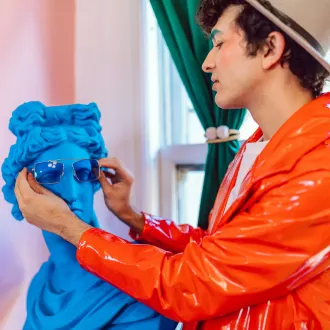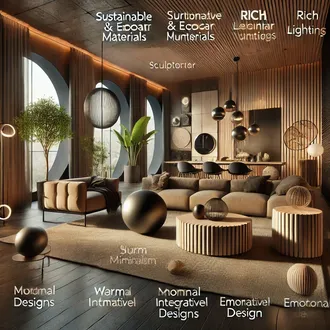Transcription Phases of the decorative process
The decoration of home interiors or small businesses seems to be a relatively simple task for which only some aesthetic taste and imagination are required; however, that is not enough because the continuous changes that occur in all spheres of modern life, make the person in charge of the decoration, requires a lot of aesthetic and technical knowledge updated.
The development of decorative projects should be carried out in phases or stages that indicate the path to follow in order to adapt the space to the client's needs.
Planning the project by phases makes it possible to evaluate at the end of each stage: the quality of the work, the use of the assigned budget and the fulfillment of the foreseen deadlines. All this will make it possible to immediately solve any errors or non-conformities and avoid the appearance of new obstacles in time.
First phase: Data collection
This phase begins with the interview in which the client refers his needs and main ideas about the aesthetic results he intends to achieve. This first contact can be more fruitful if the decorator shows images of his previous work, in order to provide the client with ideas that will allow him to modify or consolidate his original conceptions of the project.
The data collection also includes the creation of a sketch based on the measurements taken by the decorator of each of the rooms as well as the distribution of doors, windows, furniture and other significant elements. The sketch should include as much data as possible; therefore, additional views are prepared to help clarify even the smallest details of the decorative project: orientation of the room, access to natural light, condition of the architectural elements, etc.
To reinforce the data collected in the sketch, we can take enough photographs of the space to be decorated and ask the owner -if they exist- for the original architectural plans or plans of renovations of the premises. The data collection is crucial for the subsequent development of the project, therefore, all the details referred by the client as well as all the agreements or commitments that are established between both parts in each contact should be noted down.
Second phase: Definition of the concept
After compiling and organizing the information obtained through the interviews with the client and analyzing all the data captured in the sketch, the decorator must establish the general characteristics that will define the nascent project, for example: the function of each of the spaces, the type of furniture, the use of light, colors, textures, the predominant decorative style, etcetera.
When developing this stage -which is the most creative-, some previous projects -own or others- should be reviewed to stimulate the imagination and help find the most appropriate solutions for each problem.
The conceptual idea is generally expressed in several freehand sketches and diagrams that are reviewed together with the client and other people involved in the project. After the agreed modifications are made, it is re-evaluated by the interested parties, until everyone's approval is obtained and the preliminary project is ready to be carried out.
Third phase: Preparation of the draft project
In this phase the floor plans are drawn up, i.e. the scale representations that show the relationship between spaces, furniture and other decorative elements - colors, lighting, textures, accessories, etc. -. These plans make it possible to assess whether the measurements and position of each of the objects that make up a room correspond to their functions, satisfy the client's requirements and provide aesthetic values.
Decorators generally use computer programs to draw up three-dimensional (3D) plans, which allow a better appreciation of all the elements that make up the interior, making it possible to present the client with an image of the space that is much closer to the one that will be obtained at the end of the project.
Fourth phase: Preparation
process




